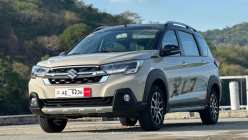In the Philippines, one of the most popular types of cars right now is seven-seater MPVs. It can accommodate the needs of our family-oriented culture due to its high seating capacities, and it can offer a lot of usable space.
Most MPVs however usually come with a subtle exterior design. Sure they don’t look bad, but they aren’t a match for the macho styling of SUVs, pickup trucks, and even some sedans.
2020 Suzuki XL7 Review: Is sporty really worthy? | Philkotse Philippines
To this end, manufacturers have come with MPV models that bear SUV-like styling. One example of these is the Suzuki XL7, which is a dressed-up version of the Ertiga. In the Philippine market though, it has several rivals. These include the Toyota Rush, the Mitsubishi Xpander, and the Honda BR-V. So how does the XL7 fare against its competitors?
Suzuki XL7: Summary of specs
When it comes to size, the XL7 measures 4,450mm long, 1,776mm wide, and 1,710mm in height. It also has a wheelbase length of 2,740mm and a ground clearance of 200mm. Of note, the XL7 features 20mm more than the Suzuki Ertiga.
As for exterior equipment, the sole variant of the XL7 comes equipped with automatic LED headlamps, LED taillights, front fog lamps, roof rails, and a set of 16-inch tires. And just like its SUV-like MPV rivals, it also features a lot of black-colored body cladding, and faux skid-plates for the front and rear.
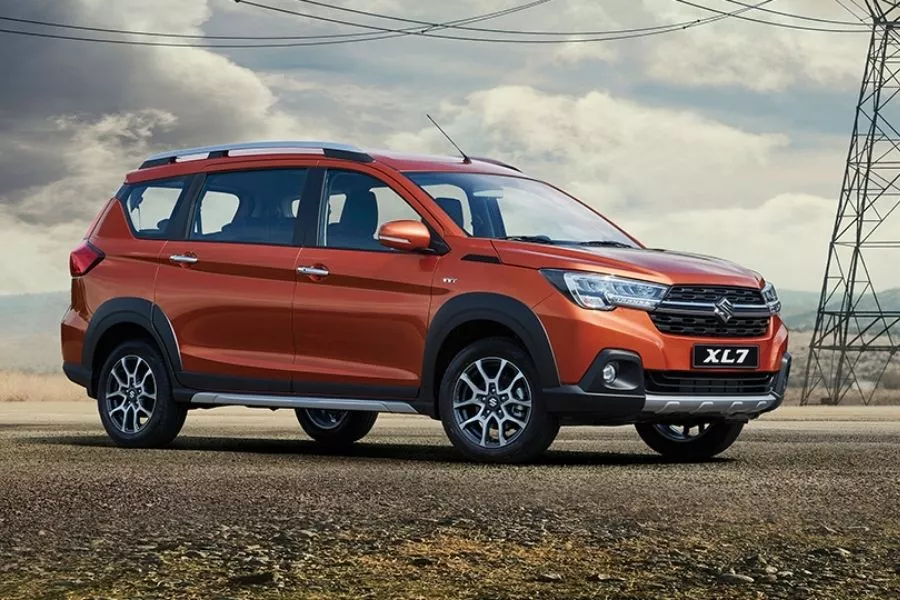
The macho-looking XL7
Like its competitors and its Ertiga sibling, the XL7 can carry up to seven people. All of its occupants are then kept cool by an automatic air-conditioning system with rear vents, and its driver is provided with a tilt-adjustable steering wheel, a push-to-start button, and a leather-wrapped steering wheel. Its seats are then clad in fabric.
For entertainment, the XL7 is equipped with a 10-inch touchscreen with Apple CarPlay, Android Auto, Bluetooth, and USB connectivity. It is then linked to a six-piece speaker system.
Moving on to safety, the XL7 comes standard with two front airbags, hill-start assist, stability control, ISOFIX child seat tethers, speed-sensing door locks, and anti-lock braking. It also gets an engine immobilizer and a car alarm.
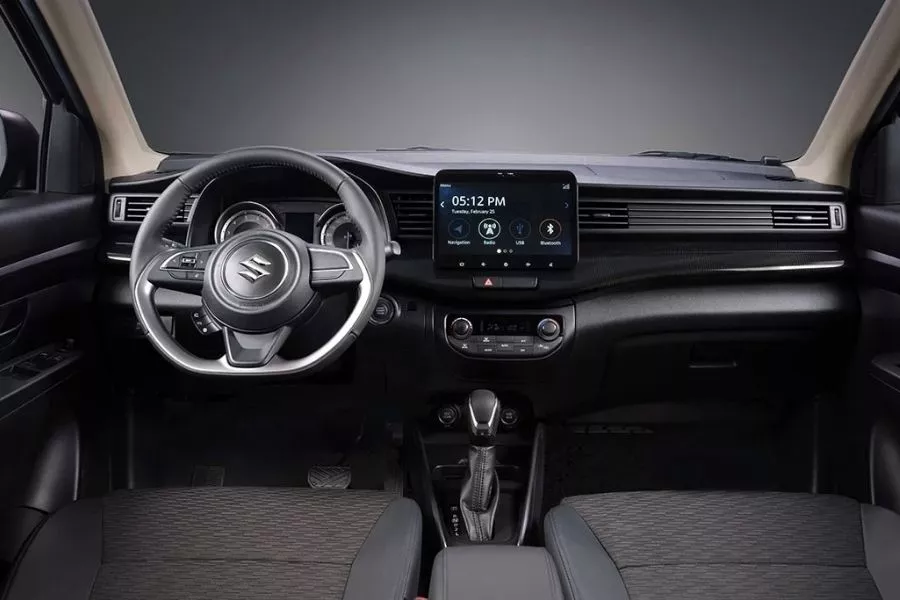
Looks a whole lot like the Ertiga's interior don't you think?
Powering the Suzuki-made MPV is a 1.5-liter inline-4 gasoline engine, which is capable of producing up to 103 horsepower and 138 Nm of torque. Power is then sent to its front wheels via a four-speed automatic transmission.
The Suzuki XL7 GLX AT is the model’s sole variant in the Philippines. It comes with a standard retail price of Php 1,073,000.
Suzuki XL7 vs Toyota Rush
Before going over the specs comparison and such, do note that the Rush is unique among this class of MPVs. To be specific, half of its chassis actually uses a body-on-frame build. Moreover, it is the only one in this list that uses a front-engine, rear-wheel-drive layout. To this end, the Rush is closer to the definition of what an actual SUV is. It even features a multi-link rear suspension system instead of the torsion beam type suspension the other MPV models use.
Due to its chassis and layout, it is also the heaviest in the models mentioned in this list with its curb weight of 1,280kg. In turn, the Suzuki XL7 weighs in at 1,160kg, the Mitsubishi Xpander at 1,235kg, and the Honda BR-V at 1,250kg.
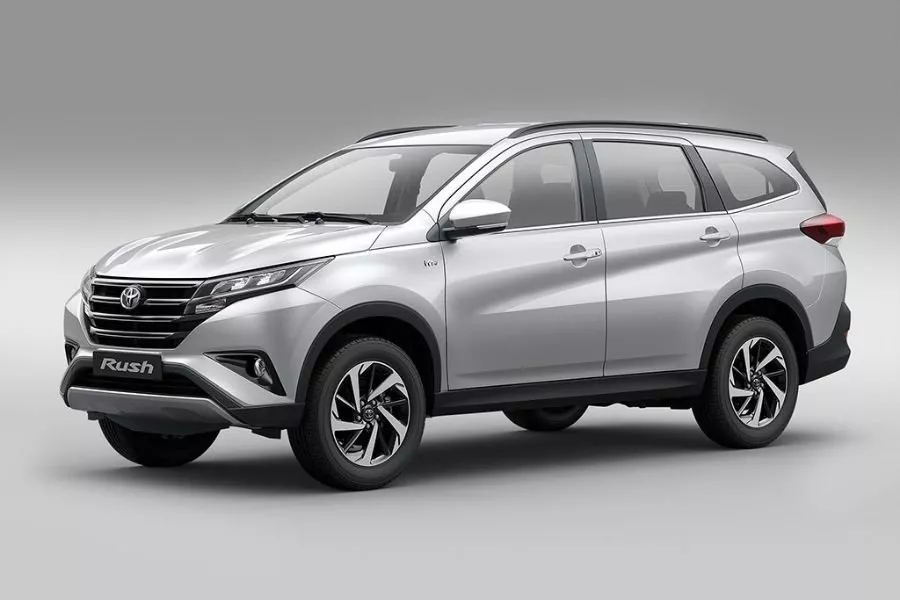
The Toyota Rush is both a comfortable family ride and a tough enough for unpaved roads
In comparing the Suzuki XL7 vs the Toyota Rush in terms of size though, then the Toyota is slightly more compact. It comes with a length of 4,435mm, a width of 1,705mm, and a height of 1,705mm. It also has a shorter wheelbase at 2,685mm, but it has more ground clearance at 220mm.
Like the XL7, the Rush’s top-spec variant also features LED taillights, front fog lights, and roof rails. Just like the XL7, its exterior is also dressed in cladding for that tough, SUV-like look. It also gets LED headlamps, though they aren’t automatic like the ones on the Suzuki model. Furthermore, it features a larger set of 17-inch wheels.
Moving on to interiors, the Rush can also seat seven. And like its Suzuki rival, it also gets fabric seats, a leather steering wheel, a push-to-start button, and automatic air-conditioning with rear vents. The Toyota model’s steering wheel is also tilt and telescopically adjustable.
Furthermore, its headunit is linked to an eight-piece speaker system though it is a smaller screen at just seven inches. Moreover, it lacks Apple CarPlay and Android Auto, but it does have Bluetooth, USB, and Toyota’s smartphone linking software.
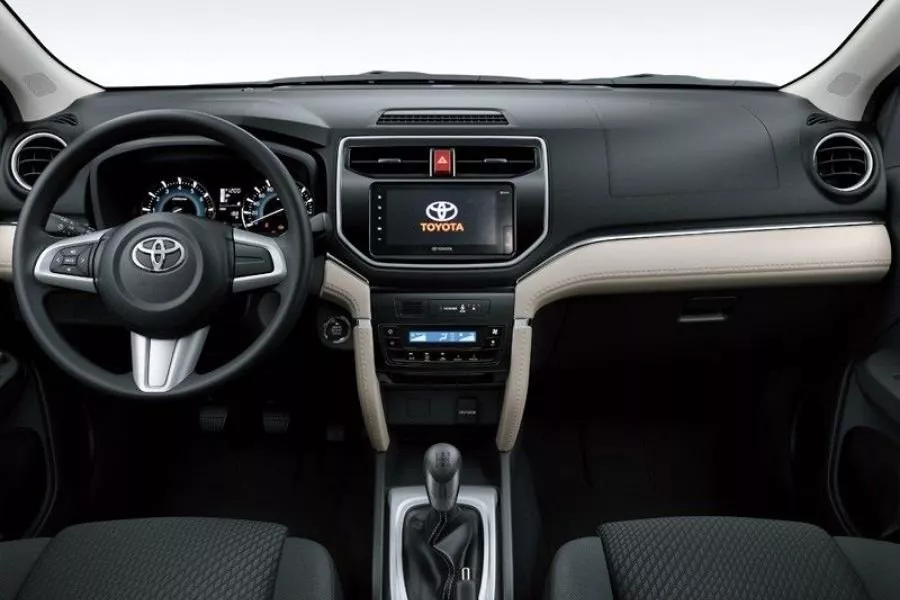
The Rush's visually simple but well-arranged interior
As for safety, the top-spec Rush has a more comprehensive kit than the XL7 since it has more airbags numbering at seven plus traction control. Like the Suzuki model, the Toyota MPV also gets anti-lock braking, stability control, ISOFIX child seat tethers, hill-start assist, speed-sensing door locks, as well as an engine immobilizer and car alarm.
Under the hood, the Rush uses a 1.5-liter inline-4 gasoline mill that can churn out 102 horsepower and 134 Nm of torque. Like the XL7, it also uses a four-speed automatic transmission. As mentioned, the said tranny sends power to its rear wheels. Of note, the Rush also has a five-speed manual gearbox which is available to its entry-level Rush E variant. In contrast, the XL7 only comes with an automatic tranny.
The prices for the Toyota Rush currently range from Php 938,000 to Php 1,100,000.
Suzuki XL7 vs Mitsubishi Xpander
Like the XL7, the Mitsubishi Xpander is also a front-wheel-drive, front-engine seven-seater model. Then again, the Mitsubishi-made MPV is a bit longer at 4,475mm. It even has a longer wheelbase length of 2,775mm. It is a bit narrower with its 1,750mm width, and less height at 1,700mm. But its ground clearance measures 205mm, which is 5mm more than the Suzuki.
As for exterior, it is the only model mentioned on this list that lacks plastic body cladding. Of note, the Xpander Cross instead gets the aforementioned exterior pieces. Like the Suzuki XL7 though, the Xpander also has front fog lamps, LED headlamps, and a set of 16-inch wheels. But unlike the Suzuki, it lacks roof rails.
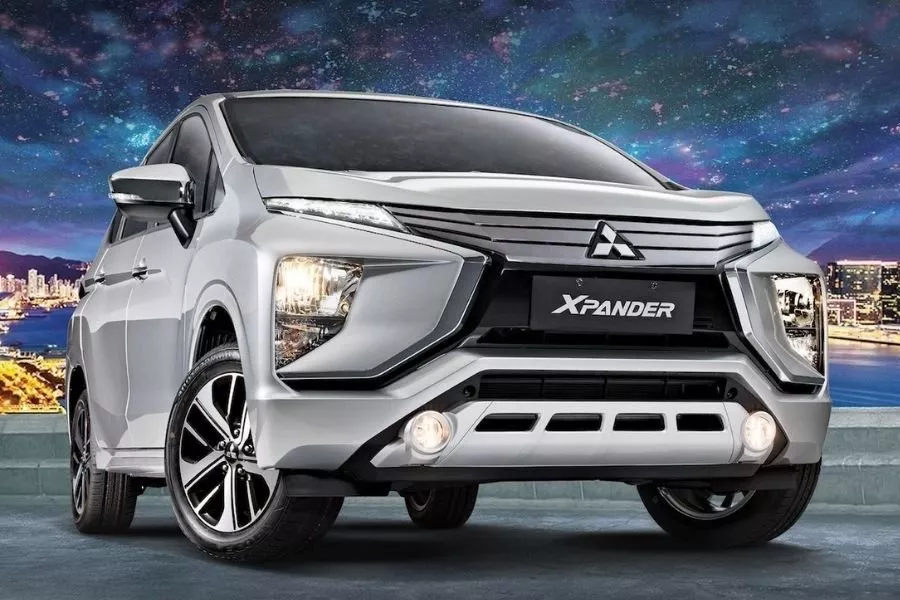
The very contemporarily styled Mitsubishi Xpander
Just like the other models on this list, the Xpander can comfortably fit up to seven occupants. And like the XL7, it features fabric seats. Unlike the Suzuki though, it comes with manual air-condoning, a tilt and telescopic steering wheel, and it also lacks a push to start button.
It also features a smaller 6.9-inch touchscreen that has iPod, Bluetooth, and USB connectivity only. It also has fewer speakers numbering at four.
As for safety, the Xpander is equipped with two front airbags, anti-lock braking, ISOFIX child seat tethers, an engine immobilizer, and security alarm. Other than lacking hill-start assist, it is more or less on-par with the Suzuki.
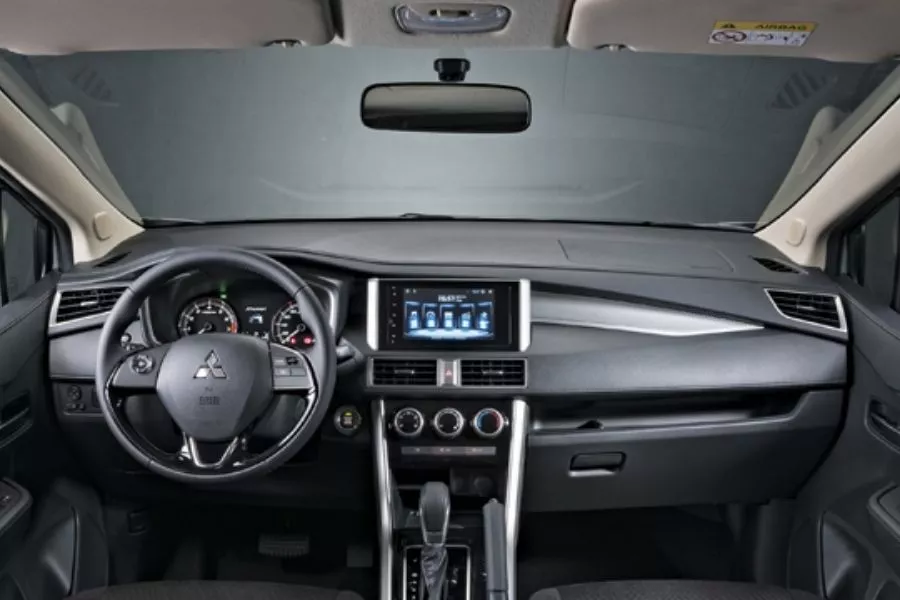
Inside the Xpander's roomy interior
Under the hood, the Xpander uses a 1.5-liter inline-4 mill capable of producing up to 103 horsepower and 141 Nm of torque. As mentioned, it is a front-wheel-drive vehicle, and it also uses a four-speed automatic transmission. Unlike the XL7 though, it can also come with a five-speed manual (Xpander GLX MT).
Pricing for the Mitsubishi Xpander ranges from Php 1,008,000 to Php 1,128,000.
Suzuki XL7 vs Honda BR-V
If we compared the Suzuki XL7 vs the Honda BR-V in terms of size, then the Suzuki is the larger vehicle. That’s because the BR-V is 4,456mm long, 1735mm wide, and 1,677mm in height. It also has a shorter wheelbase at 2,662mm, and just about the same ground clearance at 201mm.
As for exterior equipment, the BR-V's top-spec model also has front fog lamps, roof rails, LED taillights, and an abundance of black plastic cladding. It also rides on a set of 16-inch alloy wheels.

The handsome-looking Honda BR-V. A certified veteran of the local seven-seater market
For its interior though, it comes with leather seats whereas the XL7 has fabric seats. Then again, its top-spec variant likewise comes standard with automatic climate control with rear vents, a tilt adjustable steering wheel wrapped in leather, a push to start button, and a headunit with Apple Carplay and Android Auto. The said headunit though is smaller at seven inches. It also has fewer speakers numbering at four.
Safety-wise, the Honda model also has a similar kit to the Suzuki. It also comes kitted out with dual front airbags, hill-start assist, an engine immobilizer, security alarm, ISOFIX child seat tethers, and anti-lock braking.
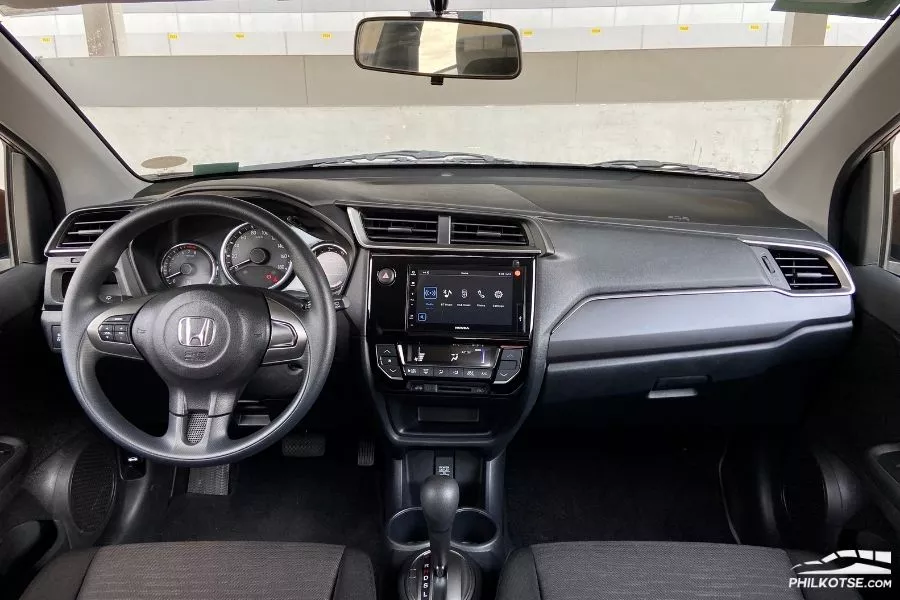
The Honda BR-V's cockpit
Moving on to engines, the BR-V is far the most powerful model on this list. At most, its 1.5-liter inline-4 mill can generate up to 118 horsepower and 145 Nm of torque. Power is then sent to the front wheels via a continuously variable transmission (CVT). This tranny also has a manual mode that can be controlled via paddle shifters (BR-V V).
Stay tuned here on Philkotse.com for more car buying and selling guides, as well as car maintenance tips.
Know more about Suzuki XL7 2025

The Suzuki XL7 is an MPV that features a design that looks like a crossover-inspired version of the Suzuki Ertiga. The XL7's only available variant is priced at Php 1,252,000. Under the hood, this MPV is powered by a 1.5-liter K15B 4-cylinder gasoline engine that is capable of generating 103 hp and 138 Nm of torque. Only a 4-speed automatic transmission is the available gearbox for the PH-spec model.
Dimensions-wise, the XL7 is 4,450 mm in length, 1,775 mm in width, and 1,710 mm in height. Also, it gets a wheelbase and ground clearance rated at 2,740 mm and 200 mm, respectively. In the Philippines, this MPV goes up against the likes of the Mitsubishi Xpander, Toyota Avanza, and Maxus G50.
>>> New and used Suzuki XL7 2025 for sale in the Philippines
Suzuki XL7 Launch
The all-new Suzuki XL7 was introduced in March 2020 together with the Suzuki S-Presso 2020. Suzuki Philippines Inc., the pioneer distributor of compact vehicles in our country, wants Filipinos to enjoy a highly efficient and good-looking car with a modern exterior and interior guaranteed to deliver an outstanding performance on the road.
Though a previous Suzuki XL7 was released in the United States, United Kingdom, and Canada from 1998 to 2009, note that it shares nothing but a name.
6 things we like about the Suzuki XL7 | Philkotse Reviews
Suzuki XL7 Exterior
The first thing you will notice in the XL7 is its fiercely bold front. It is rugged but strikingly handsome. It bears a muscled grille garnished with the right amount of chrome highlights. A pair of quad-chamber LED headlamps with daylight running lights is available for high-quality illumination.
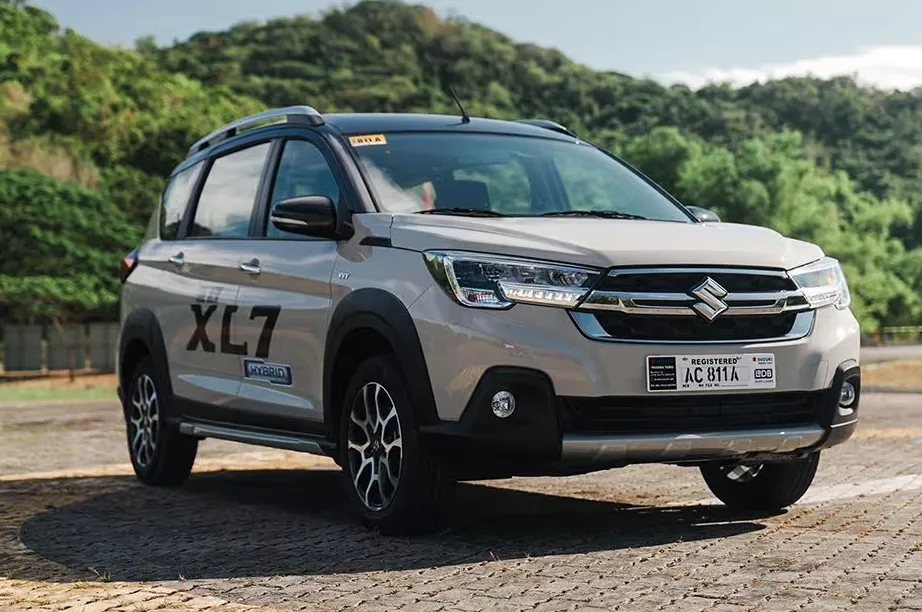
The first thing you will notice in the XL7 is its fiercely bold front.
On top, a set of sturdy roof rails are fixed. The back is generously spoiled with chrome designs and 3D tail lamps with light guides. Adding to the SUV's appeal of this automobile are the skid plates displayed on its front and rear with side claddings.
This MPV measures 4,450mm long, 1,775mm wide, and 1,170mm tall. Supporting its 1,730 kg weight is a set of 16-inch shiny alloy wheels.
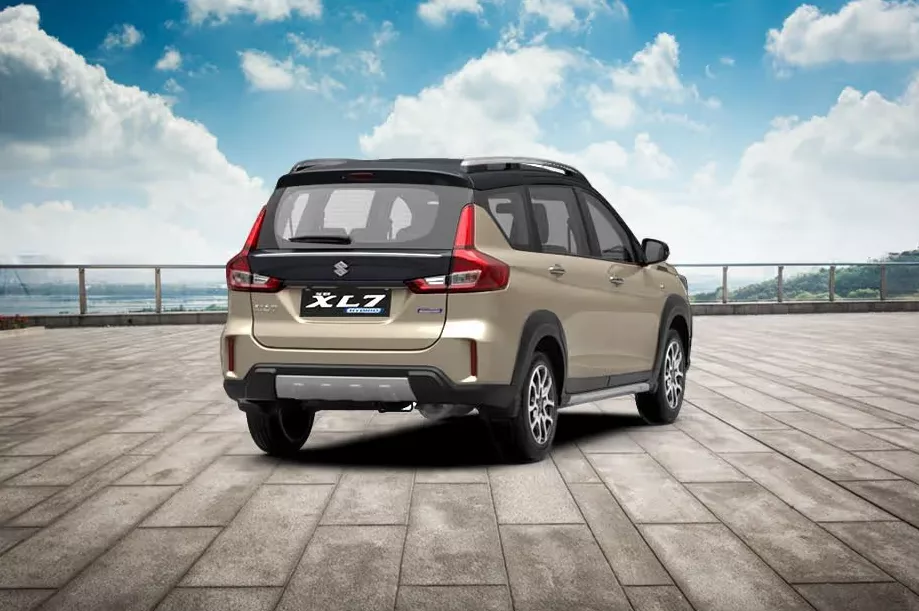
The back is generously spoiled with chrome designs and 3D tail lamps with light guides.
Suzuki XL7 Interior
Stepping inside the Suzuki XL7 is an experience as it is filled with fine details everyone will love. Drivers will be mesmerized by the upgraded meter cluster fitted with advanced multi-information color LCD and the D-shaped steering wheel.
The color scheme of this seven-seater vehicle is gray and black, accentuated with red and satin chrome. A couple of materials are carbon fiber patterned, staying true to its elegant but bold attitude. The seats come in either leather or black fabric with adjustable headrests. Passenger comfort is assured as its second row can slide and recline using a one-touch system. Seats on the third row can also be reclined and separated. Charging your mobile devices is convenient as all rows are fitted with sockets.
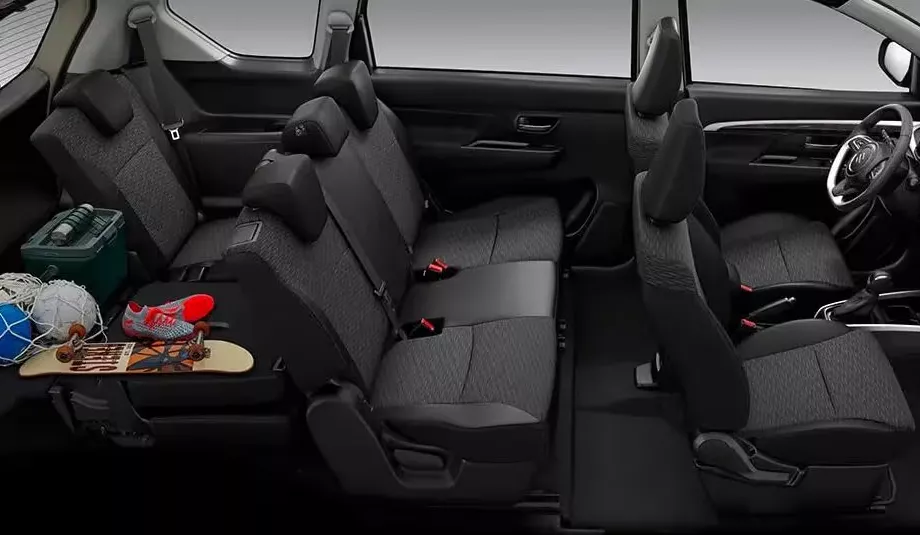
The color scheme of this seven-seater vehicle is gray and black.
As for cargo storage, it can carry a maximum of 199 liters in the split-type compartment area in its rear. Space can be maximized by raising or folding third-row seats.
Technology & Safety Features
The Suzuki XL7 comes with a 10-inch touchscreen infotainment audio system that can be connected through Bluetooth and USB. It comes with useful and modern features such as keyless entry, power steering, power windows, steering wheel audio control, and the likes.
For safety, it is fitted with a generous amount of airbags found at the front and side. Curtain and knee airbags are also installed for added protection. The car is built with an auto brake system, electronic brake distribution, ABS with electronic brake-force distribution, control for stability, etc.
Platform & Chassis
At the front, this front-wheel-drive vehicle is equipped with a Macpherson Strut and coil suspension. A Torsion beam with coil spring is attached on its rear. Stopping is provided by the use of ventilated disc brakes at the front while halting in the rear is supported by leading and trailing drums.
Suzuki XL7 Engine & Drivetrain
The Suzuki XL7 runs using a 1.5-liter K15B gasoline engine that produces 103 hp with a torque of 138 Nm. Fuel efficiency is guaranteed thanks to its aerodynamic body tested to produce less drag and a four-speed automatic transmission.
Suzuki XL7 2025 Price List
Let's check out the Suzuki XL7 2025 price in January in the Philippines.
| Variants | Price |
|---|---|
| Suzuki XL7 Hybrid GLX AT Monotone | ₱1,259,000 |
| Suzuki XL7 Hybrid GLX AT Two-tone | ₱1,269,000 |
Suzuki XL7 FAQs
1. Is the Suzuki XL7 a SUV or MPV?
The Suzuki XL7 can be seen as either an MPV or crossover for it carries the traits of both an SUV and MPV.
2. How many seats does the Suzuki XL7 offer?
The XL7 is a 7-seat VPM with a 2-3-2 configuration. Third-row seats can be raised and folded for roomier cargo space.
3. How many airbags does the Suzuki XL7 have?
The XL7 comes with driver and front passenger airbags along with 3-point seatbelts for all passengers.
4. How many different variants do the Suzuki XL7 2025 have?
In the Philippines, the Suzuki XL7 2025 has only one variant: the Suzuki XL7 GLX 1.5 AT. But it comes with two color tone options.
5. What are the dimensions of the Suzuki XL7 2025?
The Suzuki XL7 2025 measures 4,450 mm in length, 1,775 mm in width, and 1,710 mm in height.
₱ 1,181,000
ExploreRecent posts
- seven seater vehicles philippines May 11, 2021
- Latest Suzuki XL7 Price Philippines 2025 Sep 23, 2025
- Top 10 seven-seat vehicles for Filipino families Feb 24, 2023






